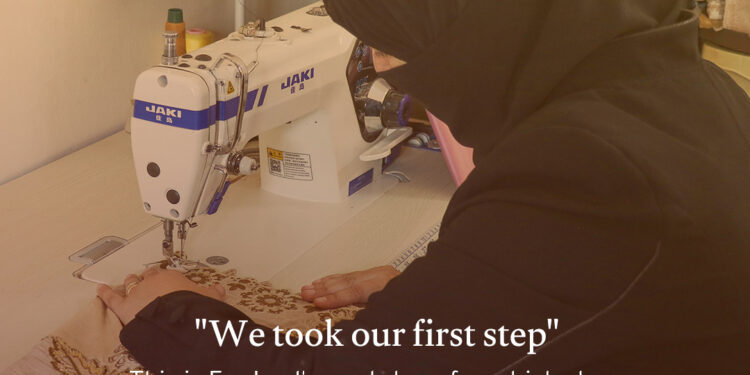“We took our first step,” says Em Iyad describing her family’s situation, months after working in her small sewing workshop in their rented house, in Bab Amr neighborhood in Homs.
The forty-year-old mother was previously forced to leave her children, two of whom suffer from hyperactivity. In order to sew and stitch pieces of cloth for other women, bearing additional transportation costs, for a little return, while her husband is a temporary worker in several professions, after losing his main source of livelihood in car upholstery, and his hand was paralyzed.
After the family received a small project grant from the Syrian Arab Red Crescent in September 2022 and purchased two sewing machines, she and her husband turned one of the rooms in the house into a workshop that today provides training and job opportunities for 20 young women, but the long hours of electricity rationing affected the workshop’s production, and the family does not currently have the capacity to pay for alternative energy, because the income barely covers the children’s basic needs.
Em Iyad’s family lost their home in Al-Khalidiya neighborhood during the years of crisis and were forced to reside in a shelter center for a period of time and then move to their rented house.
They are one of 340 families who received a livelihood grant in 2022 with support from the International Committee of The Red Cross, and it aims to help those who are affected to recover and have sources of livelihood.


